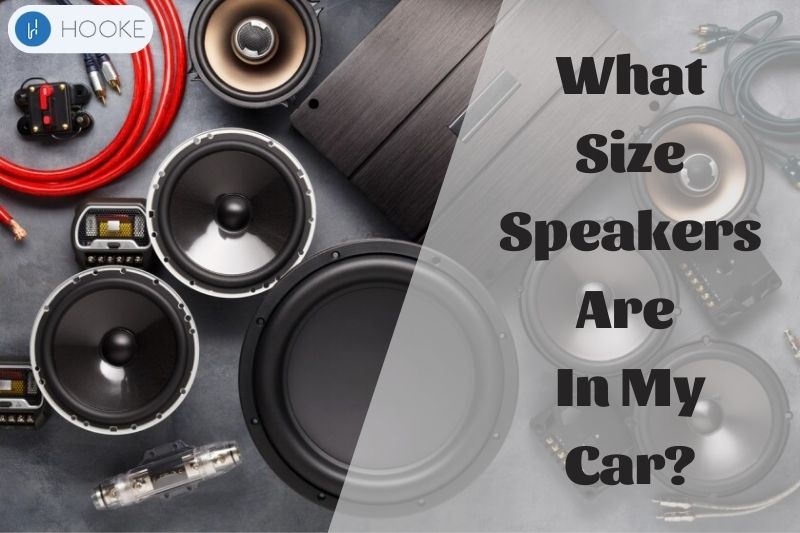In this post, Hookeaudio will discuss a common question that many car owners may have: “What size speakers are in my car?”
Knowing the size and kind of your automobile speakers might help you repair or enhance them. This will make sure that the new speakers work well with your car’s audio system.
But the answer to this question depends on the make and type of your car and the audio system you have installed.
We’ll discuss how to determine your car’s speaker size and kind, as well as how to choose replacement speakers based on size.
Contents
Car Speaker Size Chart
Car speaker sizes can vary depending on the make and model of your car. Here are some common speaker sizes you may encounter:
3.5 Inch speakers
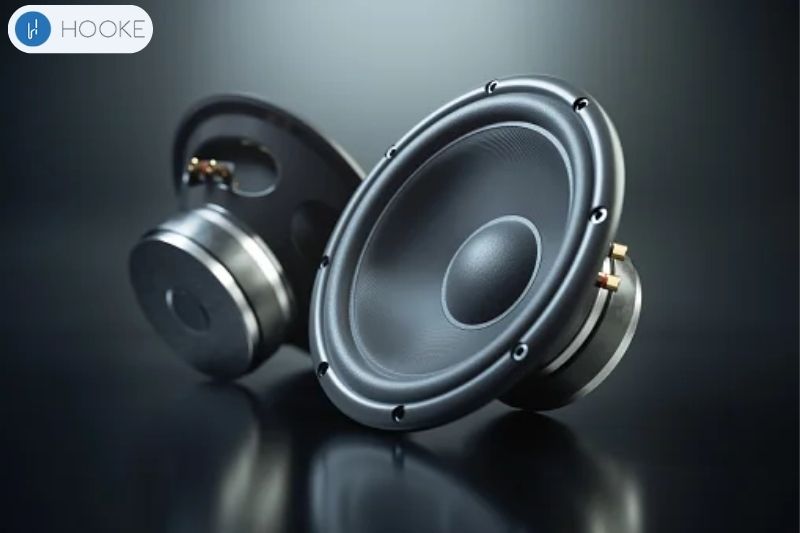
3.5-inch speakers can work in cars, based on the make and model of the car, the music you like, and your own tastes.
Generally, 3.5″ subwoofers are considered small and are usually found in entry-level or stock car audio systems. They are suitable for low to mid-range frequencies and can produce decent audio quality.
For a more immersive audio experience, consider big speakers or a more powerful speaker system.
Changing your car’s factory speaker mounts or door panels to install 3.5-inch vehicle speakers may increase costs.
4 Inch speakers
Speakers with a 4-inch diaphragm are an improvement above those with a 3.5-inch diaphragm. Even though they are still small, they can make better sound and have more power than 3.5-inch speakers.
In a car, 4″ speakers can be suitable for mid-range and higher frequencies, such as vocals and instruments. They are often used as front speakers in a car sub system and can provide a good balance of clarity and power.
When buying 4-inch car speakers, make sure they’re compatible with your car’s audio system and can be properly installed.
If you’re upgrading from stock speakers, you may require an amplifier or head unit to maximize their performance.
4×6 Speakers
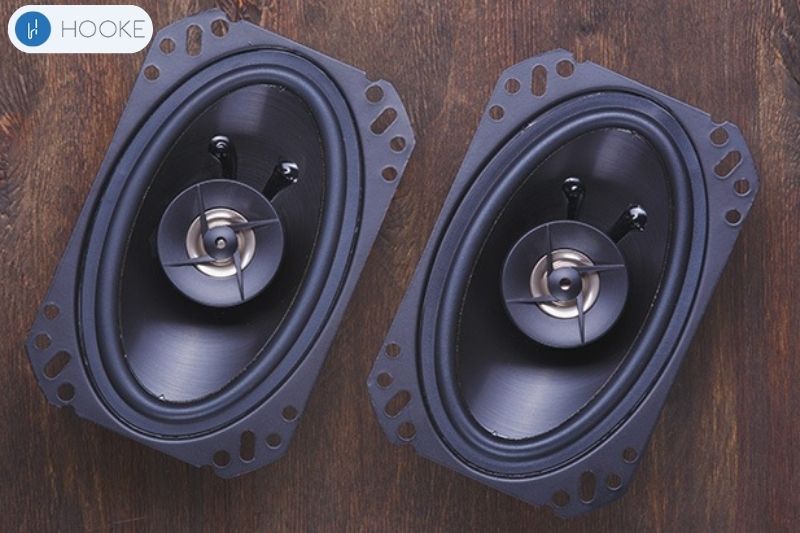
4×6 speakers are a popular size for car audio systems, especially in older cars that were designed to fit this size of the speaker. They are typically considered mid-sized speakers and can provide a good balance of power and clarity.
In a car, 4×6 speakers can be suitable for mid-range and higher frequencies such as vocals and instruments. When utilized with a compatible sound system, they may produce good audio quality and volume as front or rear subs.
If correctly placed and compatible with your automobile’s sub system, 4×6 speakers aren’t harmful for your car.
If you get better speakers for your car, the music will sound better and you’ll enjoy it more. But you need to make sure the speakers are in the right place so you don’t damage your car or music equipment.
5.25 Inch speakers
These speakers can be a good balance between price and car stereo quality. They are often placed by the factory in the front and back doors, as well as the rear deck or rear side panels of cars.
They have better midbass response than smaller subs, which may improve your audio system.
5.25-inch subs come in coaxial, midrange, midbass-only, and component combinations.
Coaxial speakers are popular because they combine a woofer and a tweeter. Component sets, on the other hand, separate the woofer and tweeter for crisper sound.
In terms of power handling, the speakers typically have an average range of 25W to 55W, which can be sufficient for many car bass systems.
But if you want more power, you might want to think about adding an amplifier or getting bigger speakers.
A speaker converter can fit 5.25-inch speakers into an automobile that originally had more sizeable speakers. If you already have a pair of speakers that you want to use, this could save you money.
5.7 Inch Speakers

5.7-inch speakers, also known as 5×7 or 6×8 speakers, are another popular size for car speaker systems.
They’re a little bigger than 5.25-inch speakers and can make a fuller sound with better low-frequency feedback. This makes them a good choice if you want a more balanced and dynamic sound.
Like 5.25 speakers, 5.7-inch speakers are coaxial, component, or midbass-only.
They can be used as a front, rear speakers and are often factory-installed in cars that have larger speaker openings in the doors or deck.
5.7-inch speakers can take 50W–100W RMS more power than 5-1/4 speakers.
With a matching amplifier or head part, they may deliver increased volume and dynamic range.
6 Inch speakers
If you’re seeking for bass quality and price, 6-inch car audio speakers are a fantastic choice.
They’re slightly larger than 5.25 speakers and can provide a fuller and more robust sound with better midrange response.
6-inch speakers can be coaxial, component, or midrange/midbass-only like other speaker sizes.
They can be used as a rear or front speakers and are usually installed in cars that have larger speaker openings in the doors or rear deck.
Six-inch speakers benefit: With an amp or head part, six-inch speakers can handle 50W to 100W RMS, increasing volume and dynamic range.
6.5 inch Speaker
The speakers offer a nice balance of audio standard and installation convenience. They have greater low-frequency rating than 6-inch speakers and are slightly larger.
6.5-inch speakers can be coaxial, component, or midrange/midbass-only like other speaker sizes.
They can be used as a front or rear speakers and are often installed in cars that have larger speaker openings in the doors or rear deck.
Typically 50W to 120W RMS, 6.5-inch speakers can take more power than more portable speakers. With a compatible amplifier or head unit, they can boost volume and dynamic range.
They speakers are easy to find and don’t cost much, so they can fit into a wide range of budgets.
They can provide a balanced and detailed sound across a range of music genres, making them a versatile option for most car audio enthusiasts.
6.75 Inch Speakers
6.75″ speakers are another popular size for car sound systems. People often think they are a good choice for people who want better car stereo quality and more bass.
They’re somewhat larger than 6.5-inch speakers and have a superior low-frequency rate.
6.75-inch speakers come in coaxial, component, and midrange/midbass-only formats like previous sizes.
They can be used as a rear or front speakers and are often factory-installed in cars that have larger speaker openings in the doors or car shelf.
6.75″ speakers can withstand 60W to 120W RMS, which is an advantage over more mini speakers. This makes them perfect for creating a louder and fuller sound, especially when teamed with a compatible amplifier or head unit.
These speakers have a deeper and more powerful bass response than smaller ones. Because they have larger cones and can move more air, they sound fuller and more fulfilling.
But remember that this may need extra parts like a speaker or amplifier to get the full benefits.
6.8 Inch Speakers
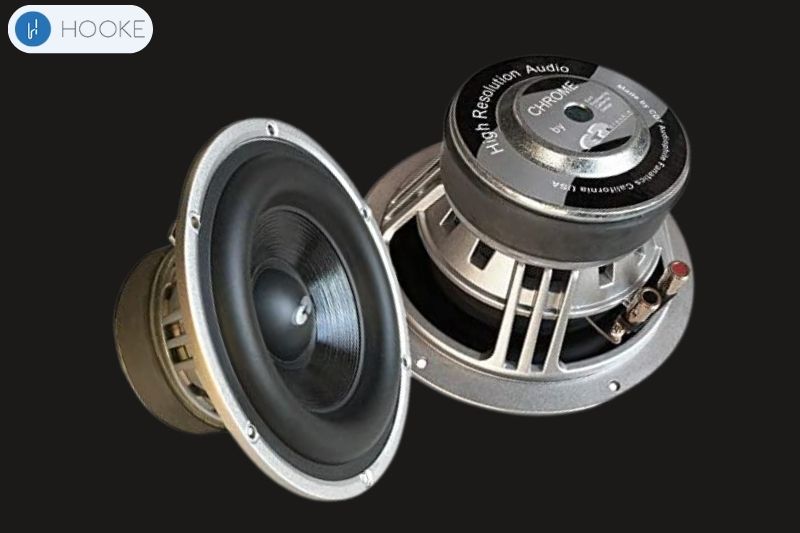
6.8″ speakers are not a popular size for car audio systems, so they may not be easily available from all manufacturers. Some companies make 6.8-inch speakers for specific cars or aftermarket installations.
6.8-inch speakers perform similarly to 6.5-inch and 6.75-inch speakers in midrange, high-frequency, and bass.
They can handle moderate amounts of power, usually between 50W and 100W RMS. This makes them a good choice for people who want better bass quality without needing more amplification.
The subs can replace original speakers in vehicles with larger speaker holes. This can provide better bass standard and improve the overall listening experience.
6.9 Inch speakers
6.9-inch speakers are not a standard size for car sound systems and are not commonly available in the market. As such, it may be difficult to find a good selection of 6.9″ speakers from different manufacturers.
If you’re considering 6.9″ car speakers, be sure they’re compatible with your sound system and easy to install.
To ensure proper speaker installation and good sound standard, engage a professional installer.
What Size Speakers Are in My Car: How To Measure
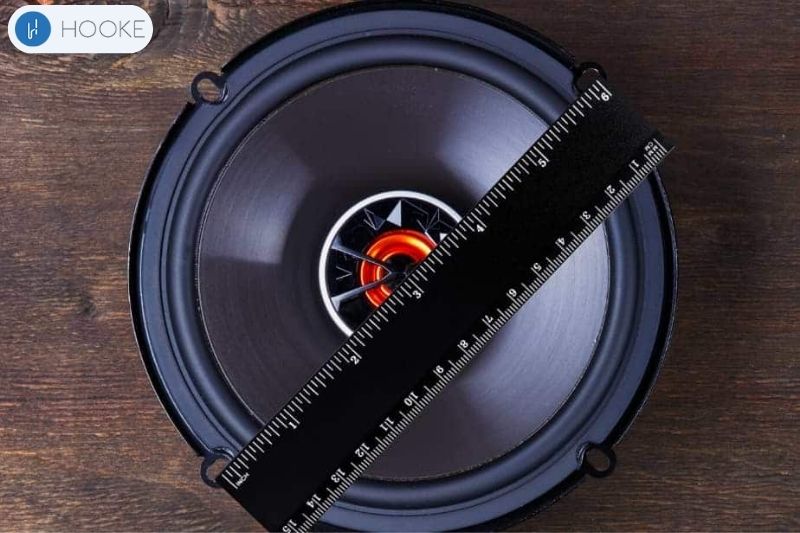
To measure the size of the speakers in your car, you will need a few basic tools:
- Tape measure or ruler
- Flashlight (optional)
Here are the steps to follow:
- Open the car doors and look for the speaker grilles. The dashboard, back deck, and rear side panels are the most common places to find factory-installed speakers.
- If the grilles are not visible, use a flashlight to locate the speakers from the inside of the car.
- Once you have located the speaker, you can measure its size. If the speaker grille is removable, remove it to access the speaker.
- From end to end, including mounting tabs, measure the speaker’s diameter. Measure the broadest part of the speaker, usually the surround or mounting flange.
- To estimate the size of an oval or irregular speaker, measure its width and length.
- Repeat the process for all the speakers to get an accurate measurement of the sizes.
- You can also check your car’s owner’s manual or call the manufacturer to find out its speaker size and kind.
After determining your car’s speaker size, you can choose the right replacements or upgrades for your audio demands.
What To Look For In Different Speaker Sizes

Sound Quality
When it comes to speaker sizes, here’s what to look for regarding sound quality:
- Smaller speakers (3-4 inches): Vocals and cymbals are usually played on mini speakers. Look for speakers with 20kHz or greater frequency response and 90dB or higher sensitivity.
- Mid-size speakers (5-6.5 inches): can handle both high and mid-range frequencies. Look for speakers with a wide frequency response range (at least 20Hz-20kHz) and a high sensitivity rating (around 90dB or higher).
- Larger speakers (6.75-7 inches and above): are ideal for producing lower frequencies and bass. Look for speakers with low-frequency (20Hz-60Hz), high power handling (100 watts or more), and hypersensitivity (90dB or higher).
- Component speakers: Their woofers and tweeters are distinct, thus they sound better than coaxial speakers. Find speakers with tweeters made of silk or metal and woofers made of polypropylene or Kevlar. They should also be able to handle a lot of power.
- Subwoofers: Subwoofers are used with other speakers to produce low-frequency bass. Subwoofers should have low-frequency rate (20Hz-200Hz), high sensitivity (90dB), and 200 watts or more power handling.
Ultimately, the best way to know how good a speaker sounds is to listen to it in person. However, considering these factors can help you choose car speakers of different sizes.
Read more: Best Budget Subwoofer Car
Mounting depth
When it comes to mounting depth, here’s what to look for in different speaker sizes:
- Smaller speakers (3-4 inches): typically have a shallow mounting depth of around 1-2 inches, which makes them easy to install in most vehicles.
- Mid-size speakers (5-6.5 inches): usually have a mounting depth of around 2-3 inches. Be sure to measure the depth of your vehicle’s speaker openings to ensure the new speakers will suit properly.
- Larger speakers (6.75-7 inches and above): typically have a deeper mounting depth of around 3-4 inches or more. Check your vehicle’s speaker opening depth and obstructions before installing bigger speakers.
- Component speakers: Separate woofers and tweeters might complicate installation. Be sure to measure the area for the woofers, tweeters, and mounting hardware.
- Subwoofers: Subwoofers are typically larger and require more space than other types of speakers. Look for subwoofers with a shallow depth if space is limited, or consider installing them in a custom enclosure.
Consider the speaker’s size and how it will fit in your car. Make sure the new speakers will fit in the existing openings or that you have the tools and skills to modify them.
Installation Space and Speaker Diameter
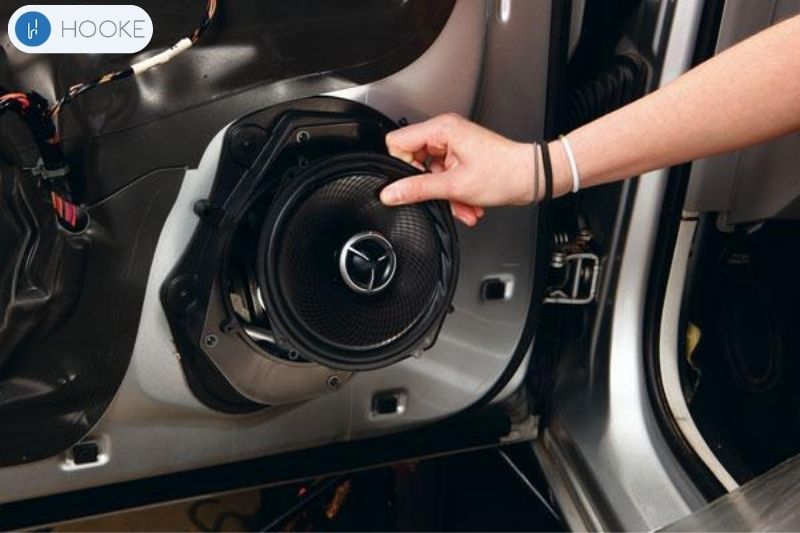
When it comes to setup space and speaker diameter, here’s what to look for in different speaker sizes:
- Smaller speakers (3-4 inches): These speakers replace factory-installed dashboard or door speakers. They install easily and fit most locations without modification. They may not sound as good or loud as bigger speakers due to their size.
- Mid-size speakers (5-6.5 inch): are commonly used in the front and rear doors of a vehicle, as well as in the dash. They provide better sound quality and volume than more compact speakers but may require more setup space. Be sure to measure the speaker openings to ensure the new subwoofers will fit properly.
- Larger speakers (6.75-7 inches and above): replace factory-installed rear deck or side panel speakers. They sound better and louder than mid-size subs but may take up more room. Measure the room and check for impediments before installing larger speakers.
- Component speakers: Component speakers consist of separate woofers, tweeters, and crossovers. They are typically used by audiophiles who want the best possible sound standard. They need greater installation space, custom mounting hardware, and car interior changes.
- Subwoofers: Subwoofers are used to enhance bass frequencies in music. They require the most setup space of any type of speaker and are often installed in custom enclosures in the trunk or hatch area of a vehicle. Measure the space and look for obstacles that may prevent subwoofer installation.
Speaker diameter matters since more massive speakers usually sound better and have more loudness.
More massive speakers demand more installation space and may not fit all vehicles without modification. Be sure to measure the available space and check for any obstructions before purchasing new subs.
The Weight of The Speaker
When it comes to how well speakers work, their weight isn’t always the most important thing. However, there are a few things to keep in mind when considering speaker weight:
- Large speakers tend to be heavy: This is because they have bigger magnets and more materials, which makes them heavier.
- Heavy speakers need stronger mounting hardware: Installing heavy speakers requires sturdy mounting hardware.
- Heavier speakers may decrease fuel efficiency: This is a small issue, but heavier speakers add weight to your vehicle, which may lower fuel efficiency.
Overall, speaker weight is not a major consideration when selecting speakers for your car. Focus on audio standard and installation factors such speaker size, mounting depth, and power handling.
How Many Speakers Are In My Car?
The number of speakers in a car can vary depending on the make and model.
Typically, a car will have at least four speakers: two in the front car doors and two in the rear doors or in the rear deck. Some cars may also have additional speakers in the dashboard, center console, or other locations.
The owner’s manual or manufacturer’s website will list your car’s speaker count. You can also inspect the interior of your car and locate the speaker grilles or covers to count the number of visible speakers.
However, some door subwoofers are hidden behind door panels or other car interior components. This means that your car’s total speaker count may not match its visible speaker count.
Read more:
FAQs about Speaker Sizes For My Car

What are the speaker sizes in my car?
The speakers in a car can be different based on the make and model of the car and the subwoofer system installed.
Some premium car systems contain more than four speakers, two in the front and two in the back. To determine what speakers are in your car, you can check the owner’s manual or visually inspect the car’s interior.
Are car speakers universal?
Car speakers are not universal, as they come in various sizes and shapes to fit different makes and models of cars. The width of a car speaker’s woofer, which can be anywhere from 3.5 inches to 10 inches or more, tells how big it is.
What size speakers are in a 2005 Chevy Silverado?
The 2005 Chevy Silverado comes with different speaker sizes depending on the trim level and speaker system installed.
Here are the most common speaker sizes for the 2005 Chevy Silverado:
- Regular cab: 6.5″ speakers in the doors
- Extended cab: 6.5″ subs in the doors and 4×6-inch speakers behind the seats
- Crew cab: 6.5-inch speakers in the doors and 6×9-inch speakers behind the seats
What speakers fit my car?
You’ll need to know your car’s bass system’s speaker sizes to find speakers that fit. The owner’s manual or a fast online search for your car’s make and model should include this information.
What size speakers are in my truck?
To determine the speaker sizes in your truck, you can do the following:
- Check the owner’s manual
- Check the factory speaker locations
- Use an online database
- Contact a dealership
What is Honda Civic speaker size chart?
| Model Year | Front Door Speakers | Rear Deck Corner Speakers |
| 2006-2011 | 6.5 inches | 6×9 inches |
| 2012-2015 | 6.5 inches | 6×9 inches |
| 2016-2021 | 6.5 inches | 6.5 inches |
What is Nissan Versa speaker size?
| Model Year | Front Door Speakers | Rear Speakers |
| 2007-2012 | 6.5 inches | 6×9 inches |
| 2013-2019 | 6.5 inches | 6.5 inches |
| 2020-2022 | 6.5 inches | 6.5 inches |
Conclusion
Overall, knowing the size and type of speakers used in your car can help you to make the most out of your bass system. When replacing or upgrading your car’s speakers, knowing the sizes and how they fit can help you decide.
If you’re considering a new automobile speaker system, visit an experienced professional to locate the ideal fit.

